M
I
C
R
O
S
T
O
R
Y
O
F
A
R
T
........................................................

NOW COMPLETED:

........................................................
MICROSTORY OF ART
ONLINE JOURNAL FOR ART, CONNOISSEURSHIP
AND CULTURAL JOURNALISM
........................................................
INDEX | PINBOARD | MICROSTORIES |
FEATURES | SPECIAL EDITIONS |
HISTORY AND THEORY OF ATTRIBUTION |
ETHNOGRAPHY OF CONNOISSEURSHIP |
SEARCH

........................................................



 >MICROSTORIES
>MICROSTORIES
- Richard Serra
- Martin Scorsese
- Claude Simon
- Sunshine
- Werner Herzog
- The Creation
- Marcel Duchamp
- Nino Rota
- Wölfflin and Woolf
- Hansjörg Schneider
- Kraftort Arkadien
- Visual Biography
- Schlaraffenleben
- Die Geisteswissenschaften
- The Voyeur
- Buzzword Sustainability
- Paul Verlaine
- Tao Yuanming
- New Beginning
- Seneca
- Still Lifes
- Charles Baudelaire
- Frédéric Chopin
- The Art History of Sustainability
- Wang Wei
- Solarpunk
- Historians of Light
- Lepanto
- Renaturalization
- Plates
- Snow in Provence
- Learning to See
- Picasso Dictionaries
- Peach Blossom Spring
- Picasso Tourism
- Tipping Points
- Sviatoslav Richter
- Weather Reports
- Treasure Hunt
- Another Snowscape in Picasso
- Picasso in 2023
- Dragon Veins
- The Gloomy Day
- The Art of the Pentimento
- Reforestation
- The Status of Painting
- Emergency Supply
- Punctuality
- Watching Traffic
- Zhong Kui
- How Painting Survived the 1990s
- Confirmation Bias
- Sustainability and Luxury
- Garage Bands
- Picasso and Artificial Intelligence
- Eyes of Tomorrow
- Picasso in 2023 2
- Gluing Oneself to Something
- Suburbia
- Bamboo
- Sustainability and Carpe Diem 1
- Interviews with Bruegel
- Sustainability and Carpe Diem 2
- Coffee & Sugar
- Bamboo 2
- Picasso in 2023 3
- Sustainability and Carpe Diem 3
- Cherry Orchard
- Old Magazines
- Chance
- Nick Drake
- Harlequin
- The Smartphone & the Art Book
- Atlas Syndrome
- The Kitchen
- Atlas Syndrome 2
- Consideration
- Tori Amos
- School
- Orchard Auctioning Day
- The Hundred Years’ War
- Sócrates
- Chameleon
- Nefertiti Bust
- Picasso as a Computer
- Sunflowers
- Philemon & Baucis
- Ode to the Radio
- Childhood
- Wimmelbild
- Restitution
- Nick Drake 2
- Wishful Thinking
- Sundays
- The Independent Scholar
- September
- The Fisherman by Pirosmani
- Microadventure
- Sociology
- Salvator Mundi
- Chillon
- Appassionata
- Amber
- Homer
- Berlin
- Planet Walk
- Improvisation
- Seeing Picasso
- These Nice Kids
- Robber
- The One
- The Sea Turtle
- Zoo
- Through the Hush
- Wunderkammer
- I Do Not Seek, I Find
- Shopping Mall
- Food Hamper
- The Secretary
- This Gate
- Nor Rainy Day
- House on a Hill
- Beautiful Island
- Second-hand Bookstore
- Flat
- Slap in the Face
- Serra, Wenkenpark
- Apologies
- The Bells
- Nordmann Fir
- Picasso Wanting To Be Poor
- Picasso, Pirosmani
- A Brief History of Sculpture
- 24 Sunsets
- Rusty Phoenix
- Glove
- Wintry Stanza
- A Song
- Like A Beatle
- Catching An Orange
- Solar Bees
- Permaculture

 >FEATURES
>FEATURES
- Van Gogh On Connoisseurship
- Two Museum’s Men
- Ende Pintrix and the City in Flames
- Titian, Leonardo and the Blue Hour
- The Man with the Golden Helmet: a documentation
- Un Jury d’admission à l’expertise
- Learning to See in Hitler’s Munich
- Leonardo da Vinci and Switzerland
- The Blue Hour Continued
- The Blue Hour in Louis Malle
- Kafka in the Blue Hour
- Blue Matisse
- Blue Hours of Hamburg and LA
- A Brief History of the Cranberry
- The Other Liberale in the House
- The Blue Hour in Raphael
- Who Did Invent the Blue Hour?
- Monet on Sustainability
- Velázquez and Sustainability
- The Blue Hour in Guillaume Apollinaire
- Van Gogh on Sustainability
- The Blue Hour in Marcel Proust
- Picasso and Sustainability
- The Contemporary Blue Hour
- The Blue Hour in 1492
- The Blue Hour in Hopper and Rothko
- Hopper and Sustainability
- The Blue Hour in Ecotopia
- The Hour Blue in Joan Mitchell
- Explaining the Twilight
- The Twilight of Thaw
- The Blue Hour in Pierre Bonnard
- Explaining the Twilight 2
- Picasso on Stalin
- Rubens on Sustainability
- The Salvator Mundi in Bruegel and Rubens
- The Blue Hour in Leonardo da Vinci and Poussin
- The Blue Hour in Rimbaud
- Faking the Dawn
- Frost and Thaw in Ilya Ehrenburg
- Picasso, Stalin, Beria
- Picasso, Solzhenitsyn and the Gulag
- Shostakovich on Picasso
- Hélène Parmelin in 1956
- Historians of Picasso Blue
- Picasso Travelling to Moscow 1
- The Blue Hour in Caravaggio
- Picasso Travelling to Moscow 2
- Picasso, the Knife Game and the Unsettling in Art
- Some Notes on Leonardo da Vinci and Slavery
- Picasso Moving to the Swiss Goldcoast
- The Blue Hour in Camus
- The Blue Hour in Symbolism and Surrealism
- Caspar David Friedrich in His Element
- Exhibiting the Northern Light
- Caspar David Friedrich in His Element 2
- Robert Schumann and the History of the Nocturne
- The Blue Hour in Robert Schumann
- Caspar David Friedrich and Sustainability
- The Twilight of Thaw 2
- Multicultural Twilight
- The Blue Hour in Anton Chekhov
- The Blue Hour in Medieval Art
- Twilight Photography
- The Blue Hour in Bob Dylan
- Iconography of Optimism

 >SPECIAL EDITIONS
>SPECIAL EDITIONS
- Visions of Cosmopolis
- Mona Lisa Landscapes
- Turner and Ruskin at Rheinfelden
- Painters On TV & On TV
- Spazzacamini in Art
- A Last Glance at Le Jardin de Daubigny
- The Experimental Cicerone
- A Dictionary of Imaginary Art Historical Works
- Iconography of Blogging
- Begegnung auf dem Münsterplatz
- Cecom
- Das Projekt Visual Apprenticeship
- Those Who See More
- A Fox on Seeing with the Heart
- Sammlung Werner Weisbach
- Daubigny Revisited
- Some Salvator Mundi Microstories
- Some Salvator Mundi Afterthougths
- Some Salvator Mundi Variations
- Some Salvator Mundi Revisions
- A Salvator Mundi Questionnaire
- A Salvator Mundi Puzzle
- Unknown Melzi
- Francis I and the Crown of Charlemagne
- From Amboise to Fontainebleau
- Drones Above Chambord
- Looking Back At Conques
- Flaubert At Fontainebleau
- Images of Imperial Ideology
- The Chronicles of Santa Maria delle Grazie
- Seeing Right Through Someone
- Melzi the Secretary
- Eying Glass
- A Foil to the Mona Lisa
- A Renaissance of the Cartoon
- Sketching a Family Tree
- Venetian Variations
- A Brief History of Digital Restoring
- A Consortium of Painters
- Leonardeschi and Landscape
- A Christ in Profile
- Learning to See in Spanish Milan
- A History of Gestures
- Leonardo and Josquin
- A Renaissance of the Hybrid
- Suida and Heydenreich
- The Watershed
- Three Veils
- From Beginning to End
- Connoisseurship of AI
- Twilight and Enlightenment
- The Blue Hour in Chinese Painting
- Dusk and Dawn at La Californie
- Iconography of Sustainability
- The Blue Hour in Goethe and Stendhal
- The Sky in Verlaine
- The Blue Hour in Paul Klee
- Iconography of Sustainability 2
- The Blue Hour in Charles Baudelaire
- From Bruegel to Solarpunk
- Some Salvator Mundi Documentaries
- Some More Salvator Mundi Monkey Business
- The Windsor Sleeve
- Brigitte Bardot’s Encounter with Picasso
- Art Historians and Historians
- A Salvator Mundi Chronicle
- The Salvator Mundi and the French Revolution
- The Fontainebleau Group
- The Encounter of Harry Truman with Pablo Picasso
- The Fontainebleau Group Continued
- The Windsor Sleeve Continued
- The Salvator Mundi in Early Netherlandish Painting 1
- Some Salvator Mundi Resources
- A New Salvator Mundi Questionnaire
- The Woman in Picasso
- The Yarborough Group
- Melzi, Figino and the Mona Lisa
- The Yarborough Group Continued
- A Salvator Mundi Global History
- The Salvator Mundi in Medieval Art
- The Salvator Mundi in Medieval Art 2
- The Salvator Mundi in Early Netherlandish Painting 2


 >HISTORY AND THEORY OF ATTRIBUTION
>HISTORY AND THEORY OF ATTRIBUTION
- The Mysterious »Donna Laura Minghetti-Leonardo«
- Assorted Demons of Connoisseurship
- Panofsky Meets Morelli
- Discovering the Eye of Sherlock Holmes
- Handling the Left-handed Hatchings Argument
- Visual History of Connoisseurship
- Alexander Perrig
- Connoisseurship in 2666
- What Postmodernity Has Done to Connoisseurship
- Dividing Four Fab Hands
- A Leonardesque Ambassador
- Test Cases in Connoisseurship
- A Raphael Expertise
- How to Tell Titian from Giorgione
- Louise Richter
- The Unique Property in the History of Connoisseurship
- An Expertise by Berenson
- The Book of Expertises
- An Album of Expertises
- An Expertise by Friedländer
- A Salvator Mundi Provenance
- How to Tell Leonardo from Luini
- An Expertise by Crowe and Cavalcaselle
- An Expertise by Bayersdorfer
- An Expertise by Hermann Voss
- An Expertise by Hofstede de Groot
- Leonardeschi Gold Rush
- An Unknown »Vermeer«
- An Expertise by Roberto Longhi
- An Expertise by Federico Zeri
- A Salvator Mundi Geography
- A Salvator Mundi Atlas
- The Bias of Superficiality
- 32 Ways of Looking at a Puzzle
- James Cahill versus Zhang Daqian
- Five Fallacies in Attribution
- On Why Art History Cannot Be Outsourced to Art Dealers
- On Why Artificial Intelligence Has No Place in Connoisseurship
- Salvator Mundi Scholarship in 2016
- Leonardo da Vinci at the Courts
- The Story of the Lost Axe
- The Last Bruegel
- A Titian Questionnaire
- On Where and Why the Salvator Mundi Authentication Did Fail
- The Problem of Deattribution

 >ETHNOGRAPHY OF CONNOISSEURSHIP
>ETHNOGRAPHY OF CONNOISSEURSHIP
MICROSTORY OF ART
ONLINE JOURNAL FOR ART, CONNOISSEURSHIP
AND CULTURAL JOURNALISM
........................................................

***
ARCHIVE AND FURTHER PROJECTS

1) PRINT


***
2) E-PRODUCTIONS


........................................................

........................................................

........................................................
FORTHCOMING:


***
3) VARIA

........................................................

........................................................

........................................................

........................................................

........................................................
***
THE GIOVANNI MORELLI MONOGRAPH

- The Giovanni Morelli Monograph
........................................................
MICROSTORY OF ART
ONLINE JOURNAL FOR ART, CONNOISSEURSHIP AND CULTURAL JOURNALISM
HOME
MICROSTORY OF ART
MICROSTORY OF ART 
ONLINE JOURNAL FOR ART, CONNOISSEURSHIP AND CULTURAL JOURNALISM

GLOSSARY
GLOSSARY: Mythologies of Small Things
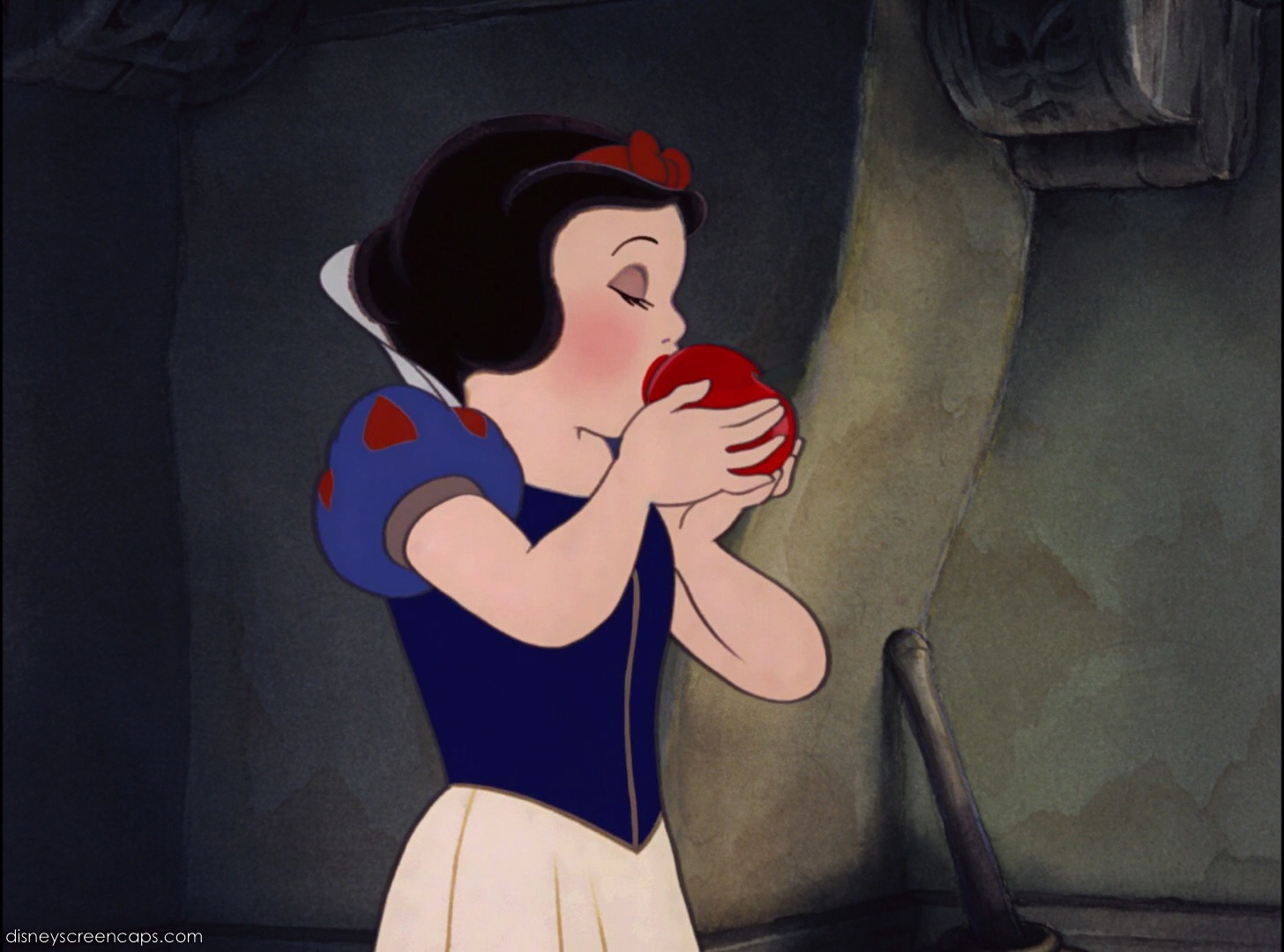
(Picture: novatale.com)
Apple, poisoned:
I thought that, under A, we should have a reminder that ›small things‹ are not necessarily ›nice things‹ (yet compare ›Small is Beautiful‹, below).
Bonsai wisteria:
See here: http://www.seybold.ch/Dietrich/VanGoghOnConnoisseurship

(Picture: weexolo)
Clue:
Like for example a Mexican hairless dog (also called Xoloitzcuintle), depicted in a painting in Nino Filastò’s 1990 crime fiction novel Incubo di signora, a painting that is taken as being by Boltraffio, who died in 1516, when yet there were (probably) no or only very few Mexican hairless dogs to be found in Europe (see: http://en.wikipedia.org/wiki/Mexican_Hairless_Dog and http://en.wikipedia.org/wiki/Spanish_conquest_of_the_Aztec_Empire).
The fake is not being found out until the transvestite Bice, who is also rendered in that picture, is being murdered.
»Clues« is, moreover, the (short) English title of an epoch-making essay by historian Carlo Ginzburg (see: http://www.princeton.edu/~ereading/Ginzburg%20Clues.pdf and http://en.wikipedia.org/wiki/Carlo_Ginzburg).
PS: The above reads also as a clue that connoisseurship is deeply intertwined with historical knowledge (it was Columbus, who apparently noted the presence of strange hairless dogs on his First journey), another clue that it is not about the mere looking (and one may call this the ›Mexican hairless dog-fallacy‹).
Detail, Beatification of:
Interesting formulation by German writer Navid Kermani (http://de.wikipedia.org/wiki/Navid_Kermani), actually referring to the delicacies of Persian culture and to be found in his marvelous (Moby Dick-size) novel Dein Name. And one might raise the question here (without actually answering it) why it is the detail that we love, and very in particular? Why not the particular combination of details, the half or the whole?
PS: As opposed to, or in combination with: the ›Devil in the Detail‹.
Dew (from the stormy Bermuda islands):
William Shakespeare, The Tempest, 1,2 (Ariel speaking):
»Safely in harbor
Is the king’s ship. In the deep nook where once
Thou called’st me up at midnight to fetch dew
From the still-vexed Bermoothes, there she’s hid.
Small things might be extravagant things. The philosopher Peter Sloterdijk (http://en.wikipedia.org/wiki/Peter_Sloterdijk), by the way, made much out of this image.
Finger Cup Espresso:
Thing I encountered in the United States. I am suggesting, in case it is strong enough, to call it ›Dew From the Stormy Bermuda Islands‹.
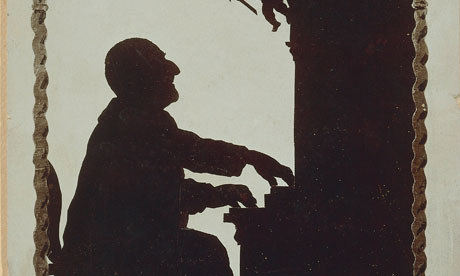
(Picture: kcra-kw.com)
Fragment:
How would one love to have a full score of Bruckner’s Finale to the Ninth (http://en.wikipedia.org/wiki/Symphony_No._9_%28Bruckner%29), and not only sketches! (May one, by the way, call him the Captain Ahab of symphonic literature, for his monumental-size scores?) But this is probably why we love fragments: because they are stimulating, because they lead other composers, humbly, to attempt a completion. And also, yes, because one may think that the whole is in the fragment (or at least work with the suggestion).
I don’t know if the whole of the unfinished Finale is in the sketches, but I also like the idea of indirectly referring to things, and this is what a something that has been defined as a fragment (otherwise it doesn’t work) actually does.
Galaxy:
As in ›the Galaxy is on Orion’s belt‹: see: http://www.seybold.ch/Dietrich/VisionsOfCosmopolis

(Picture: youtube.com)
Global Village:
As in the slogan (probably one of the most mendacious and misleading slogans ever created)
God of Small Things, The:
Referring to the novel by Arundhati Roy that, by the way uses a motto by John Berger as its motto (http://en.wikipedia.org/wiki/The_God_of_Small_Things and http://en.wikipedia.org/wiki/John_Berger).
Is it, by the way, a god that is in the detail?
Landscape:
To see landscape, German connoisseur Erich Steingräber (see: http://www.seybold.ch/Dietrich/TwoMuseumSMenThomasHovingAndErichSteingr%E4ber) reminds us, it is not enough to see the detail. One has to link the details and to synthesize a mental map. – And one might add that to think society, it is not enough to think the individual. Though I don’t know if the discipline of sociology is still a relevant discipline, one should remind that it proceeds from the individual (in its social relations) to the dyad and the triad (http://en.wikipedia.org/wiki/Triad_%28sociology%29) etc.
Manuscript L:
This is a really, really small notebook used by Leonardo da Vinci. Literally pocket-sized (although I have not tried, to stick it in my pocket). One of the notebooks kept at Paris. Maybe Leonardo had it fixed at his belt.
Microcredit:
See here: http://en.wikipedia.org/wiki/Microcredit (the microeconomics of virtual museums and art journals are also very worth studying).
Microhistory:
See: http://www.seybold.ch/Dietrich/LEMMATA
Microstory:
See: http://www.seybold.ch/Dietrich/LEMMATA
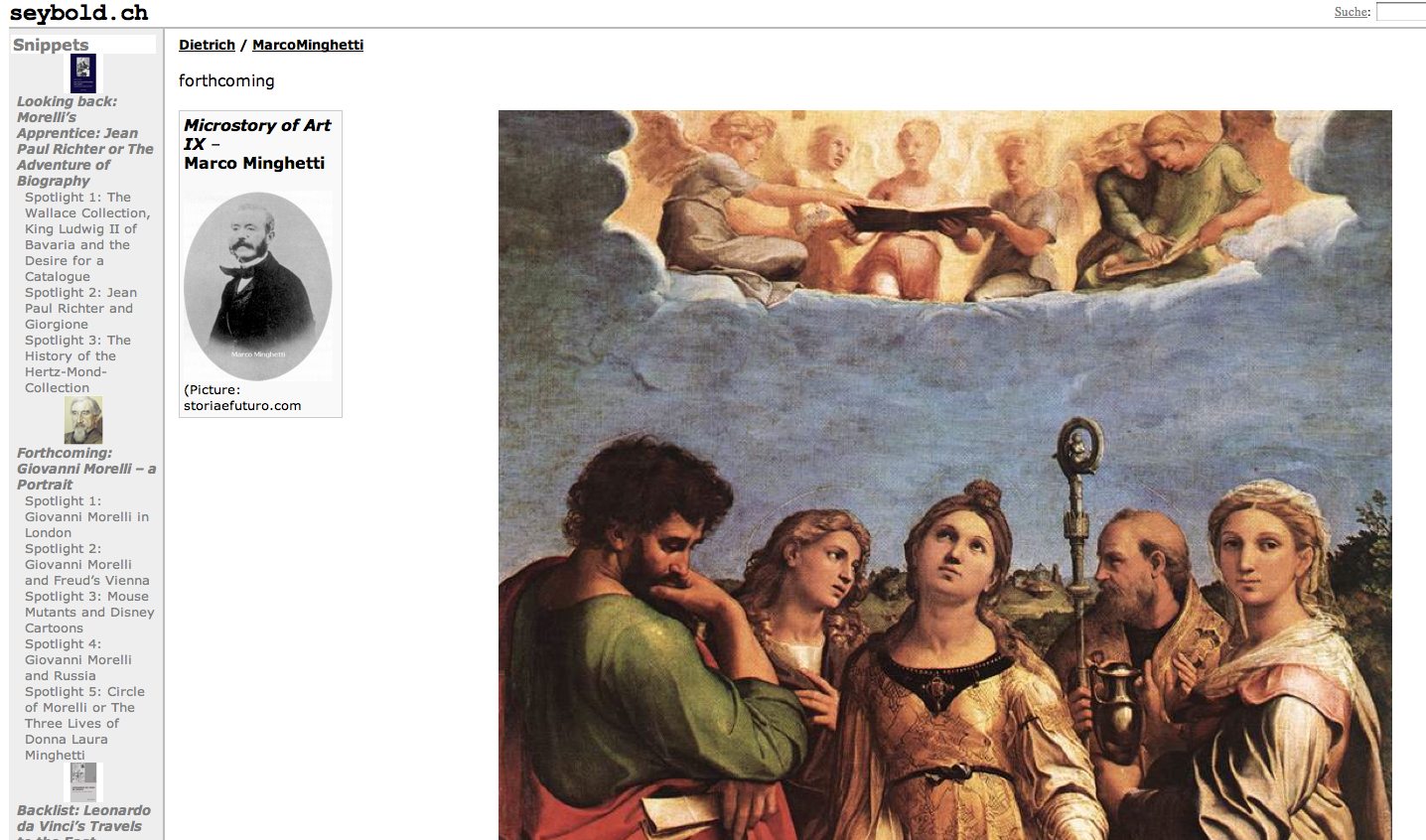

Microstory of Art:
See: http://www.seybold.ch/Dietrich/LEMMATA and http://www.seybold.ch/Dietrich/MicrostoryOfArtINDEX
Mikrogramme:
Texts by Swiss writer Robert Walser (see: http://en.wikipedia.org/wiki/Robert_Walser_%28writer%29 and http://www.seybold.ch/Dietrich/RobertWalser), and written in his miniature pencil script. (I am, by the way, also told, that the Marquis de Sade had, for economical reasons (to spare paper), a very small handwriting as well. Yet the reasons behind the Mikrogramme by Walser were probably different ones, and psychological reasons).

(Picture: pinterest.com)
Mikromachie:
Term coined by the Swiss literary critic Stefan Zweifel (http://de.wikipedia.org/wiki/Stefan_Zweifel). As opposed to ›Gigantomachie‹ (http://de.wikipedia.org/wiki/Gigantomachie).
Moby-Dick:
With or without hyphen, if referring to the title of the novel? I have chosen to write it with, like most whale connoisseurs do now. Yet if I am referring to the whale, I spare the hyphen.
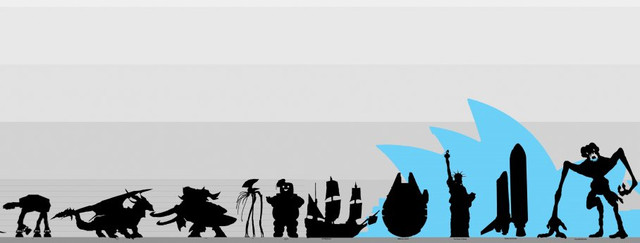
(Picture: crunchyroll.com)
Monster-size:
If in need for a synonym, replacing ›big‹, one might use this.
Nanosecond:
See: http://en.wikipedia.org/wiki/Nanosecond. I have recently read that Biblical Hebrew lacked notions to refer to really short time units like split seconds, nanoseconds, whatever.
Nanostory:
See: http://www.seybold.ch/Dietrich/MicrostoryOfArtPINBOARD
(Picture: twitter.com)

(Picture: Durova)
Nuce, in:
In a nutshell. The idiom, apparently, goes back to Pliny the Elder (http://de.wikipedia.org/wiki/In_nuce), while nutcracking goes not. Proof: the Nutcracker Man (http://en.wikipedia.org/wiki/OH_5).
Pluto:
Dwarf planet (see: http://en.wikipedia.org/wiki/Pluto), but largest object in the Kuiper belt.

(Picture: ateliercassandra.nl)
Punctum:
Term coined by the French essayist Roland Barthes (http://en.wikipedia.org/wiki/Roland_Barthes), and opposed to the notion of studium (see: http://barthesglossar.wordpress.com/2012/12/11/punctumstudium/).
In simple terms the notion of punctum means that a work of art might get you for some reason, in a sense that you are taken in. And if it gets you and you are taken in, if you are hit by that arrow and your interest is raised, one may speak of punctum, like being tapped, and as opposed to any encounter with a work of art without that sort of inner commitment, which is instigated by something, possibly a mere detail for which you might be sensitive, so that you, as a result, deal with that particular work of art on an existential, and not only on an intellectual level.
Quark:
A fascinating journey into the building blocks of our physical universe, or something (see: http://en.wikipedia.org/wiki/Quark). Note that only the specialists do know these things well, and they still come up with new elementary particles. Yet without their deeper understanding of physics you would certainly not being reading this (having said this – this spares me the entry for the ›Microprocessor‹).
Short People:
Song by Singer-songwriter Randy Newman (listen here: http://www.youtube.com/watch?v=1NvgLkuEtkA) that has been controversial. If a something is meant to be ironical, this doesn’t work if signs of irony are lacking (or if people do not perceive or do not want to perceive the signs).
Small is Beautiful:
As opposed to ›Big is Better‹. See: http://en.wikipedia.org/wiki/Small_Is_Beautiful
Small-printed, the:
Still easy to overlook (compare also ›Mikrogramme‹, above), but we live in times of yet another danger: the agreeing to terms (we do not read) by clicking (not on this website, though).
Smalltown Boy:
A Pop Song by 1980s Pop band Bronski Beat, expressing deepest despair (listen here: http://www.youtube.com/watch?v=Xuz94ZIPfJk; the video is nevertheless also displaying some hope). Note the giant-size cornflakes box at 1:27 (and also the egg). Or is it to be called a ›family-size‹ box? But that’s part of the problem.
Story, ultra-short:
Writer Italo Calvino (http://en.wikipedia.org/wiki/Italo_Calvino), in his Lezioni americane, made the following by Augusto Monterroso known (http://en.wikipedia.org/wiki/Augusto_Monterroso):
»When he awoke the dinosaur was still there.«
(Under the circumstances we might also come back to the good old ›Veni, vidi, vici‹.)
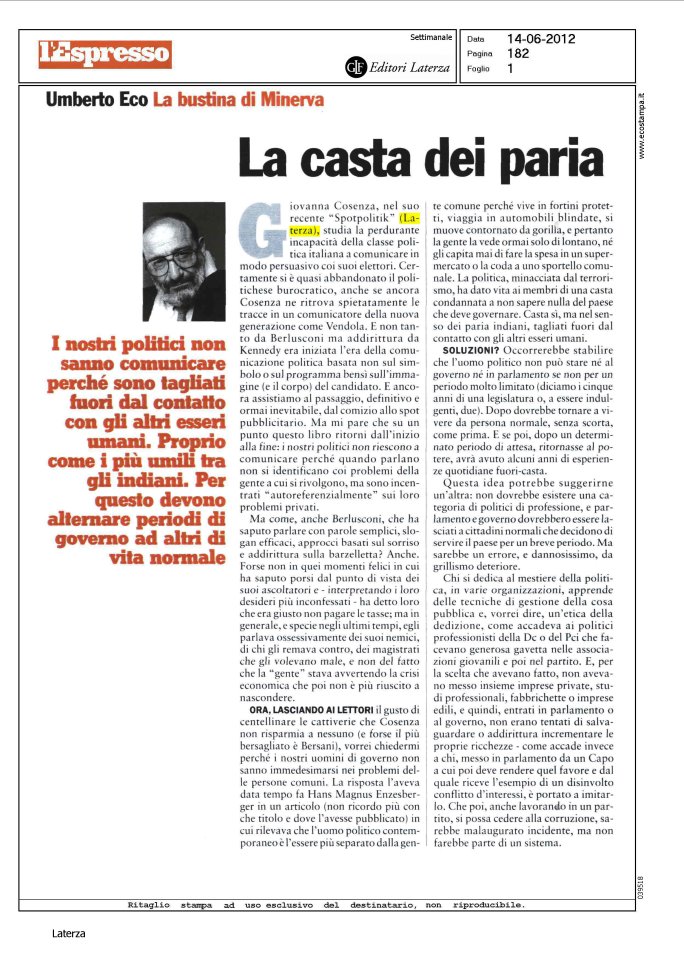
(Picture: giovannacosenza.wordpress.com)
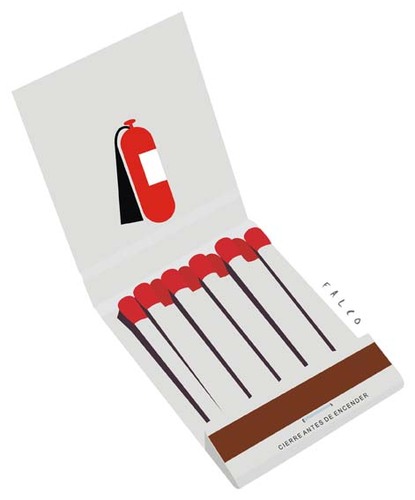
(Picture: toonpool.com)
Streichholzbriefe:
German title for a series of blogs (excuse me, of columns or glosses) by Umberto Eco (http://de.wikipedia.org/wiki/Streichholzbriefe). Originally assembled under the title La bustina di Minerva. Streichholzbriefe can be understood as letters that fit into a matchbox, or, as the original title suggests, refer to this kind of notepad (see also under ›Mikrogramme‹, above):
Trojan Horse:
Might be called a key detail of the Trojan War although probably not actually being very small (right, it’s about relativity).
Vertigo by Transfer of Dimension:
See the beginning of poet Wallace Stevens’ (http://en.wikipedia.org/wiki/Wallace_Stevens) Thirteen Ways of Looking at a Blackbird (http://en.wikipedia.org/wiki/Thirteen_Ways_of_Looking_at_a_Blackbird):
»Among twenty snowy mountains,
The only moving thing
Was the eye of the blackbird.
(…).«

INDEX | PINBOARD | MICROSTORIES | FEATURES | SPECIAL EDITIONS | HISTORY AND THEORY OF ATTRIBUTION | ETHNOGRAPHY OF CONNOISSEURSHIP
MICROSTORY OF ART
ONLINE JOURNAL FOR ART, CONNOISSEURSHIP AND CULTURAL JOURNALISM
HOME
© DS